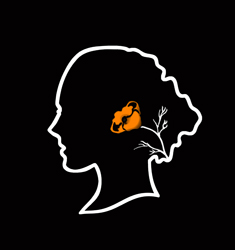By Sjors van Alphen
David Dewey, watercolor, 18x24
In the portrait of David Dewey, the Stanton Ranch manager on Santa Cruz Island, Harmon's design for this specific painting was influenced by her connection to the land and the buildings of the Island. Most of the structures that still remain on Stanton Ranch were developed between 1888 and 1891, long before David Dewey arrived. Mr. Edwin Stanton, one of the original owners of Santa Cruz Island, oversaw the development of this historic ranch. Upon Harmon's arrival over a century later, she found a remarkable connection from Santa Cruz’s historic ranch environment to the beautiful paintings by the American artist Andrew Wyeth. Born in 1917 in Chadds Ford, Pennsylvania, Wyeth’s work was heavily based on his rural hometown, which appears very similar to fields and style of housing on Santa Cruz Island. When Wyeth was asked about why he depicted his childhood area in a lot of his work, he responded, “I didn’t think it a picturesque place. It just excited me, purely abstractly and purely emotionally.” Being a fan of Wyeth’s work and Stanton Ranch’s resemblance to it, Harmon utilizes similar techniques to paint her portrait of David Dewey. The Dewey portrait was painted with David standing in front of one old Stanton Ranch building. She uses watercolor, Wyeth’s trademark, to paint this particular portrait, which emphasizes the connection with Wyeth’s work and the culture of Santa Cruz Island.
Christina's World, Andrew Wyeth
In many of his paintings, Wyeth depicted the building of his farming neighbors the Olsens and the Kuerners. In his painting, Christina’s World (1948), Wyeth depicted the house of his neighbors, The Olsons, and their daughter, Christina Olson, who suffered from a chronic condition where she was unable to walk. This forced her to spend most of her time at home. When Andrew Wyeth unfortunately passed away in 2009, he was buried next to Christina in a spot near to where he drew Christina’s World.
Christy Ranch, Santa Cruz Island,west end
Harmon quotes, "An observation I have made is that I have seen so many pieces of art because technology makes reproductions accessable through books (and now online.) I made this connection on Santa Cruz Island. I had seen a large body of Wyeth's work and then I noticed I was experiencing Santa Cruz Island through the lense of Wyeth’s world. On one corner of the island I felt as if I was in the painting, Christina's World."
One of the intentions of using social media in this project is to underscore how all art work is influenced by this mellinium's abundance of information. So Harmon's intention of using watercolor and painting David in his work clothes is a clear acknowledgement that she has absorbed Wyeth into her own painting métier. This is another example of absorbing culture into our own personal identity."




